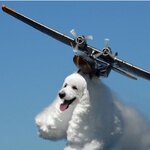33k in the air
Staff Sergeant
- 1,356
- Jan 31, 2021
Frankly the reality is the Soviets were no match for the Germans and suffered as a result.
In other words, the Soviets were weaker, and the superior numbers you keep citing immaterial. Thus the German success is at least as attributable to the weakness of their opponents as it is to German strength. Which is exactly my point.
Not necessarily a function of Soviet problems as much as the Germans were vastly more experienced and had better equipment.
In other words, German success is at least as attributable to the weakness of their opponent as it is to German strength. You make my point again.
. . . so the Soviets weren't slouches, despite being surprised.
Which is it? Were the Soviets no match for the Germans as you initially said? Or are they better than you initially said? It can't be both.

